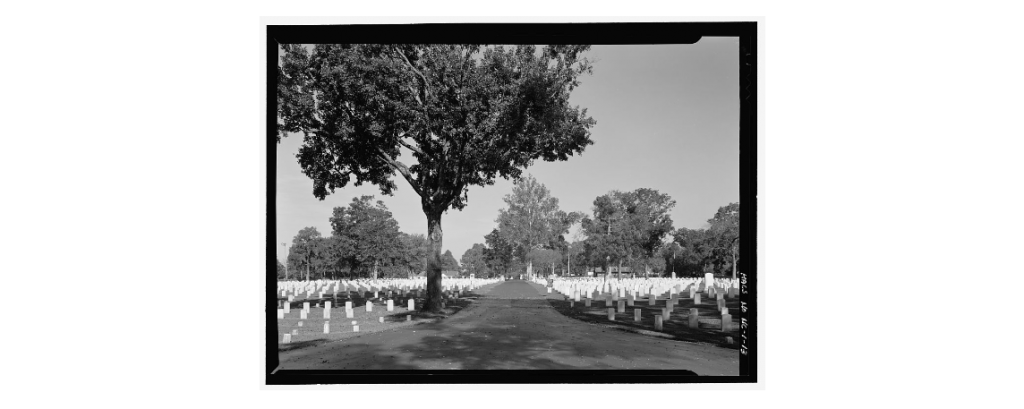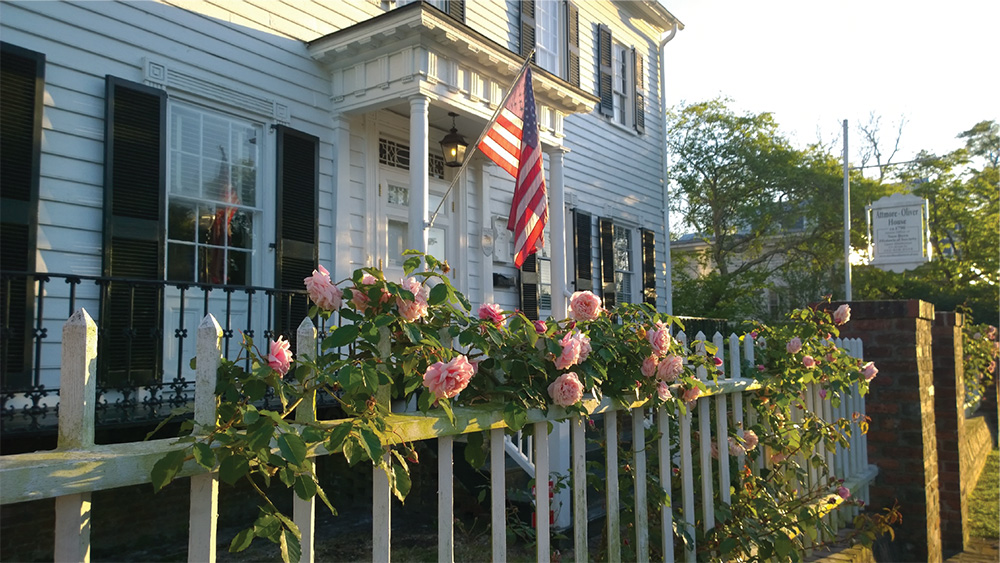 What New Bern property was listed on the National Register for Historic Places in 1997 and took an Act of Congress to create? If you answered the New Bern National Cemetery at 1711 National Avenue, established on February 1, 1867, you are correct. Why was it established, who is buried there and where were soldiers buried prior to its creation?
What New Bern property was listed on the National Register for Historic Places in 1997 and took an Act of Congress to create? If you answered the New Bern National Cemetery at 1711 National Avenue, established on February 1, 1867, you are correct. Why was it established, who is buried there and where were soldiers buried prior to its creation?
Before the Civil War, the US Government buried its soldiers near where they died. The number of casualties that occurred during the Civil War focused public attention on providing a decent burial for those who died in defense of the Union. On 17 July 1862, Congress passed the Omnibus Act, establishing the National Cemetery system and authorizing the President to purchase grounds “for soldiers who shall have died in the service of the country.” Fourteen cemeteries were established that year and used to bury the dead from hospitals located near large camps and battlegrounds. After the war, a vast search was conducted of battlefields, churchyards, farms, and other properties in order to locate Union dead who would be reinterred in these cemeteries.
New Bern was occupied by Union troops from 1862-1865 and large camps of soldiers were situated in and around the city. After the Battle of New Bern in March, 1862, the dead were buried at local hospitals as well as at the Battlefield and Cedar Grove Cemetery. Bodies of Union soldiers were removed from the battleground as well as local cemeteries in New Bern, Beaufort, Newport, Kinston, and other places along the coast, and were reinterred in the National Cemetery.
In 1868 the cemetery location was owned by Mr. and Mrs. William P Moore of New Bern who sold 7.6 acres of land to the US on March 13, 1869 for $570.17. On July 1, 1874 Isaac W. Hughes sold a narrow strip of adjoining land (.1 acre) to the US for the sum of $100, expanding the cemetery to 7.7 acres.
William Dougherty, from the 101st Regiment, Pennsylvania volunteers was the first Superintendent of the cemetery. Graves were originally marked by wooden headboards but were later replaced with marble headstones. Graves were originally organized by states. There are 1051 “unknowns” buried in a separate section and there are 301 headstones marked “U.S.C.T.” designating members of the United States Colored Troops. Between 1898 and 1909, the states of Connecticut, New Jersey, Massachusetts, Rhode Island financed and erected special monuments at New Bern National Cemetery to commemorate the service of men from their states.
By 1873 Congress extended the right of burial in a national cemetery to all honorably discharged Union Veterans of the Civil War. No Confederate dead were allowed burial there. Until the First World War, these cemeteries were often referred to as “Yankee Cemeteries” and ignored by most local residents who continued to memorialize their Confederate dead in local cemeteries. In New Bern, a special memorial was placed at Cedar Grove Cemetery to honor the many Confederate soldiers who are buried there. By the Spanish American War, burial was available to all who died on foreign soil by disinterring the body and shipping it home to a national cemetery. Eventually burial was offered to veterans of all wars.
New Bern National Cemetery was closed to new internments in the early 1990’s. It was listed on the National Register for Historic Places in 1997.


